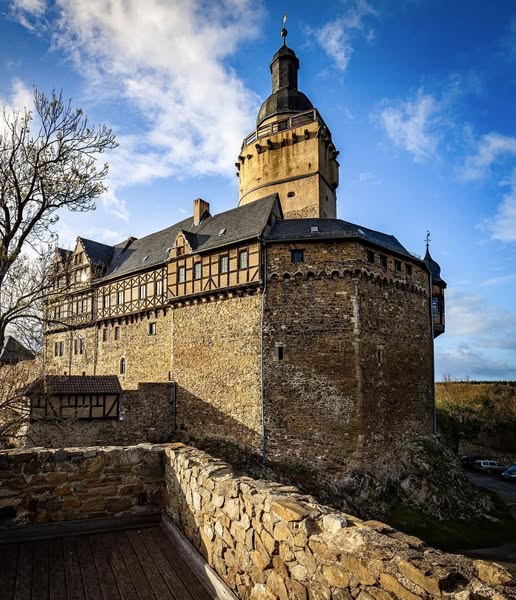
Greetings castle enthusiasts! Let’s chat about Burg Falkenstein, a formidable medieval fortress nestled in the heart of Germany’s Harz Mountains. It stands as a testament to the rich tapestry of European history. Constructed during the 12th century, precisely in 1120, by the Counts of Regenstein, this imposing edifice has witnessed the ebb and flow of centuries, leaving an indelible mark on the landscape.
The castle, strategically perched atop a rugged crag, served both as a symbol of power and a strategic stronghold. Throughout the Middle Ages, it bore witness to the shifting alliances and territorial disputes that defined the era. In 1180, Burg Falkenstein became a pivotal player in the political chessboard as it passed into the hands of the Holy Roman Empire, solidifying its role in the intricate web of feudal relationships.
The 14th century ushered in a new chapter for Burg Falkenstein as the House of Welf, a prominent noble family, took possession. Under their stewardship, the castle underwent significant expansions and renovations, reflecting the architectural trends of the time. The formidable towers and sturdy walls that characterize the fortress today are a testament to the medieval engineering prowess that aimed not only to defend but to impress.
As the Renaissance dawned, Burg Falkenstein found itself at the crossroads of cultural and intellectual exchange. The castle became a hub for scholars and artists, fostering an environment where ideas flourished amidst the stunning backdrop of the Harz Mountains. This period marked a departure from the fortress’s military-centric past, embracing a more nuanced role in shaping the intellectual landscape of the region.
However, the tranquility of the Renaissance was short-lived, as the Thirty Years’ War, a devastating conflict that engulfed Europe in the 17th century, cast its ominous shadow over Burg Falkenstein. The castle, like many others, endured the ravages of war, witnessing sieges and occupations that left scars on its venerable walls. The Peace of Westphalia in 1648 brought an end to the conflict, heralding a period of reconstruction and renewal for the battered fortress.
In the ensuing centuries, Burg Falkenstein witnessed various owners and changes in fortune, eventually falling into a state of neglect. It wasn’t until the 19th century that a wave of Romantic enthusiasm for medieval history led to renewed interest and restoration efforts. The castle became a symbol of the burgeoning appreciation for cultural heritage, a sentiment that resonates to this day.
Today, Burg Falkenstein stands proudly, a living chronicle of the past, inviting visitors to explore its labyrinthine corridors and majestic towers. The careful preservation of its historical authenticity ensures that every stone speaks of a bygone era, allowing us to connect with the enduring legacy of this remarkable fortress in the heart of the Harz Mountains.







Sé el primero en comentar